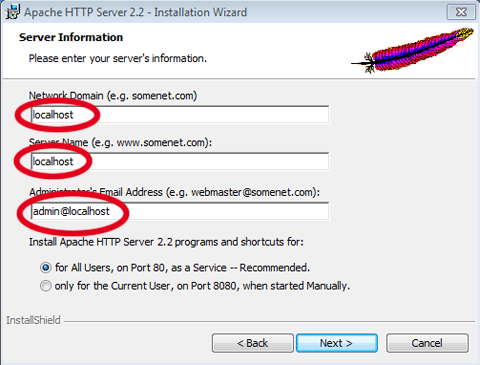Easyphp 5.3.2

Devserver Devserver allows you to fit your needs and allows you to setup a local server with the same characteristics as your production server (if you have one). You can develop locally anywhere (at home, at work, on your laptop.) thanks to the portability of the system. Features: • Ready-to-use! Download, install and code! • Portable (usb key, memory stick, external hard drive.) • Fully configurable (port, timezone, extensions.) • For beginners, experts • Start, stop, restart servers • Direct access to files and folders • Configuration files, error log, access log. • Modular: add applications, versions. Webserver Webserver is a personal web hosting service.
Driver Printer Epson L100 For Windows 7 64 Bit. Mar 24, 2010 P.S. I've set up everything (installing EasyPHP-5.3.2 (Apache, PHP, MySQL), linking php executable within ME:Web 3, etc) correctly as far as I can see. When I'm running just pure.php (no MySQL function calls), it works fine even with the port #. This problem happens only when I try to call MySQL functions within the.php.
You can host your websites, files, applications on your computer and make them accessible from internet. You can tune your servers as you like and then host your websites, share your applications or demo permanently or for a short period of time (useful for sharing with friends, developers or clients). Develop with Devserver and host / share with Webserver. Features: • Ready-to-use! Download, install and host! • Manage servers services • Easy IP, router and firewall configuration • Fully configurable (port, timezone, extensions.) • Configuration files, error log, access log.
• Modular: add applications, versions.
B.5.3.2 How to Reset the Root Password If you have never assigned a root password for MySQL, the server does not require a password at all for connecting as root. However, this is insecure.
For instructions on assigning a password, see. If you know the root password and want to change it, see, and. If you assigned a root password previously but have forgotten it, you can assign a new password. The following sections provide instructions for Windows and Unix and Unix-like systems, as well as generic instructions that apply to any system.
• Log on to your system as Administrator. • Stop the MySQL server if it is running. For a server that is running as a Windows service, go to the Services manager: From the Start menu, select Control Panel, then Administrative Tools, then Services. Find the MySQL service in the list and stop it. If your server is not running as a service, you may need to use the Task Manager to force it to stop.
• Create a text file containing the password-assignment statement on a single line. Replace the password with the password that you want to use.
ALTER USER 'root'@'localhost' IDENTIFIED BY 'MyNewPass'; • Save the file. This example assumes that you name the file C: mysql-init. Canon Scangear Windows. txt. • Open a console window to get to the command prompt: From the Start menu, select Run, then enter cmd as the command to be run. • Start the MySQL server with the special option (notice that the backslash in the option value is doubled): C: >cd 'C: Program Files MySQL MySQL Server 8.0 bin' C: >mysqld --init-file=C: mysql-init.txt If you installed MySQL to a different location, adjust the cd command accordingly. The server executes the contents of the file named by the option at startup, changing the 'root'@'localhost' account password. To have server output to appear in the console window rather than in a log file, add the option to the command. If you installed MySQL using the MySQL Installation Wizard, you may need to specify a option.
For example: C: >mysqld --defaults-file='C: ProgramData MySQL MySQL Server 8.0 my.ini' --init-file=C: mysql-init.txt The appropriate setting can be found using the Services Manager: From the Start menu, select Control Panel, then Administrative Tools, then Services. Find the MySQL service in the list, right-click it, and choose the Properties option. The Path to executable field contains the setting. • After the server has started successfully, delete C: mysql-init.txt. You should now be able to connect to the MySQL server as root using the new password. Stop the MySQL server and restart it normally. If you run the server as a service, start it from the Windows Services window.
If you start the server manually, use whatever command you normally use. B.5.3.2.2 Resetting the Root Password: Unix and Unix-Like Systems On Unix, use the following procedure to reset the password for the MySQL 'root'@'localhost' account.